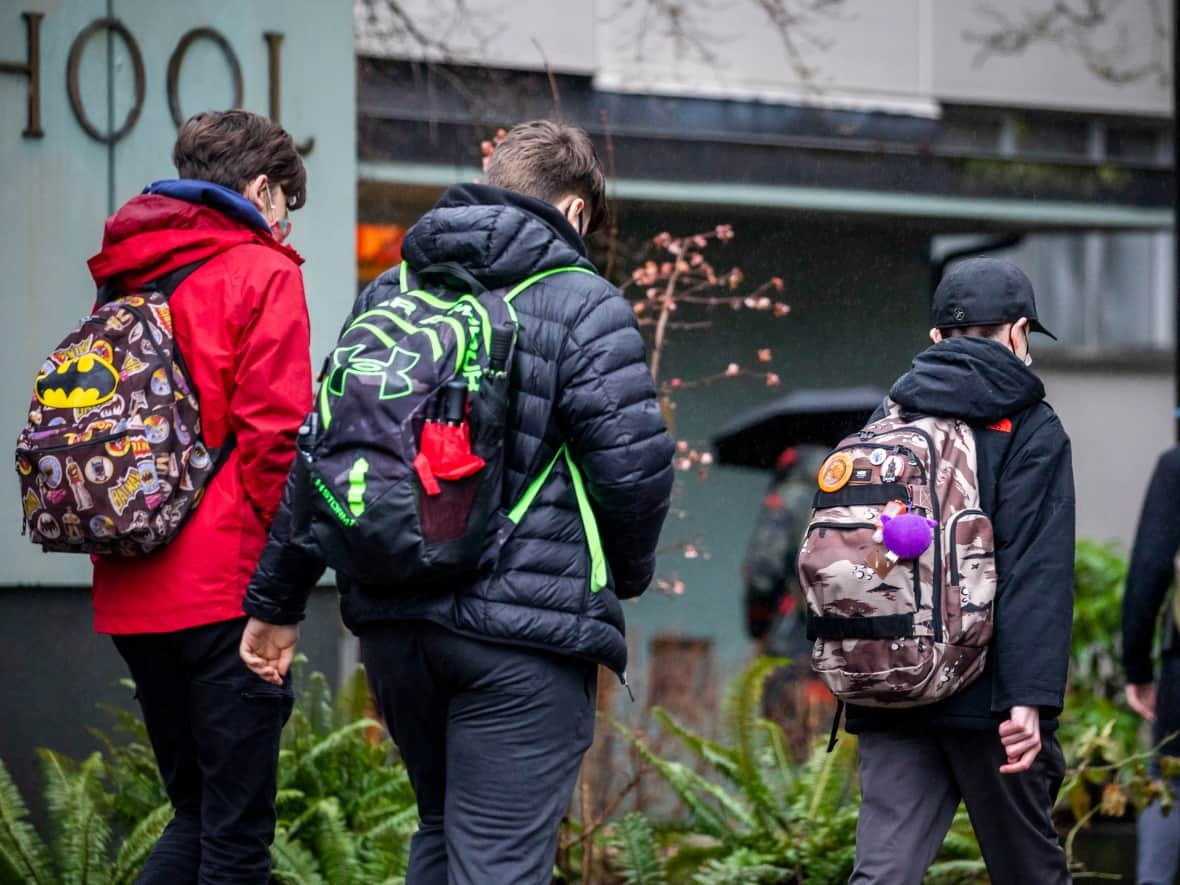Child poverty rates in B.C. dropped due to COVID-19 supports, annual report shows

An advocacy group says child poverty in British Columbia decreased in 2020 due to government benefits provided in response to the COVID-19 pandemic, but any progress may be wiped out by the rising costs of living.
The B.C. Child Poverty Report Card from the First Call Child and Youth Advocacy Society shows that, for the first time in 20 years, B.C. had a lower child poverty rate than the national average, with a record low of one in eight children in the province living in poverty, compared to one in five in 2019.
The 2020 child poverty rate in the province was 13.3 per cent, a decrease from 18 per cent in 2019 and just slightly above the national rate of 13.5 per cent.
First Call uses income and census data from Statistics Canada to produce its annual report.
While the statistics are positive, the child and youth advocacy coalition largely credits COVID-19 pandemic financial benefits for lifting many families above the poverty line that particular year. Those government benefits have since ended, and with the cost of living skyrocketing, the coalition is worried the progress will not be permanent.
"This is a blip year, but it's a lesson year," said First Call's Executive Director Adrienne Montani, on CBC's The Early Edition Tuesday morning.
She said without government transfers in 2020, which included both regular child and family benefits as well as pandemic assistance, the poverty rate in B.C. for that year would have been around 30 per cent.
First Nations, immigrants are B.C.'s most vulnerable children
While the report shows the largest one-year drop in the child poverty rate since 2000, one in eight children was still living in poverty, and the report says rates were "dramatically higher'' among children living on First Nation reserves and those who recently immigrated.
The report says the average child poverty rate on 59 B.C. reserves was 29.2 per cent, more than twice the overall child poverty rate. Isolating the data to rural reserves puts that number even higher at 33.9 per cent.

"The continuing legacy of colonialism is still very apparent in these numbers," reads the report. "Governments at all levels must meaningfully collaborate with First Nations, Métis and Inuit governments to develop and implement plans to prevent, reduce and eradicate child and family poverty."
Immigrant children are also at higher risk of living in poverty in B.C., with one in five recently immigrated children living in poverty in 2020.
Children in lone-parent families also consistently suffer higher poverty rates. In 2020, the child poverty rate for children with a single parent was 38.3 per cent, about six times higher than kids living with couples.
Recommendations made
Along with the data, First Call provided 25 recommendations to all levels of government to give poor children in this province a better chance of success.
These include raising income and disability assistance, paying living wages, ensuring universal maternity and paternal leave benefits, automatically enrolling young people leaving foster care into an income support program, providing adequate funding for child welfare services on reserve and scaling up funding for social and affordable housing.
Montani said access to affordable childcare is also critical.
"The majority of poor kids still live with families who are in the workforce," she said.

All 25 recommendations are detailed starting on page 36 of the 40-page report.
Social Development and Poverty Reduction Minister Sheila Malcolmson said she's read the report and knows inflation is hitting people hard this year.
"Although we exceeded our legislated poverty reduction targets, we're very aware that a lot of people are suffering right now,'' she said.
The NDP government introduced its poverty reduction strategy in 2019 with the aim of reducing overall poverty by 25 per cent and child poverty by 50 per cent by 2024. Malcolmson said it will soon launch public consultation to revisit the strategy.
"We know we need to do more,'' the minister said.


